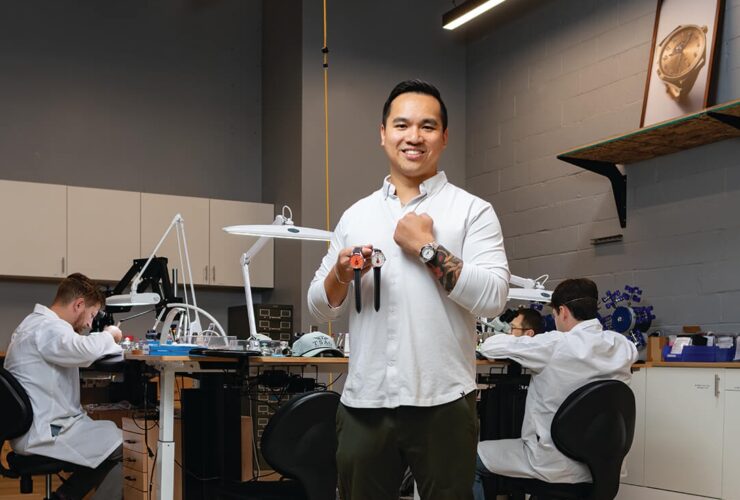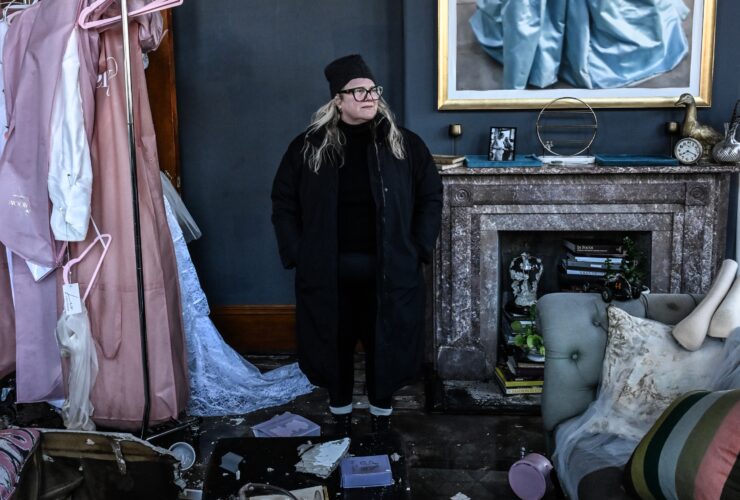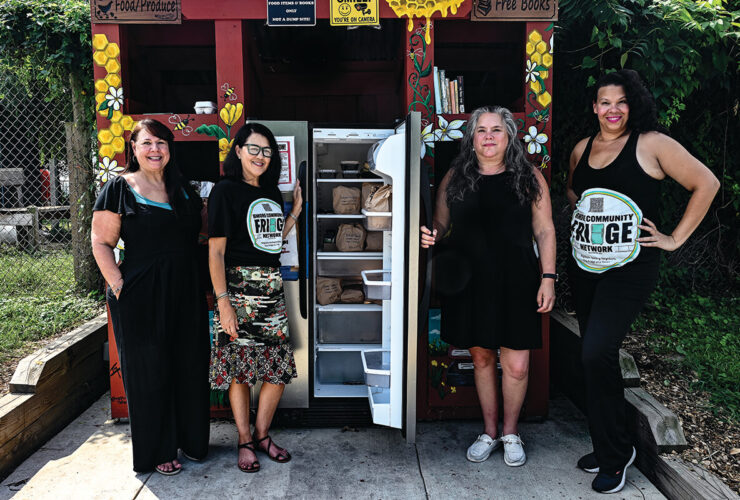José Antonio Bowen and Shanaysha M. Sauls
The educators reveal why relationships trump content, high school graduations are better than college ones, and liberal arts colleges are more inclusive than people think.
By Amy Mulvihill

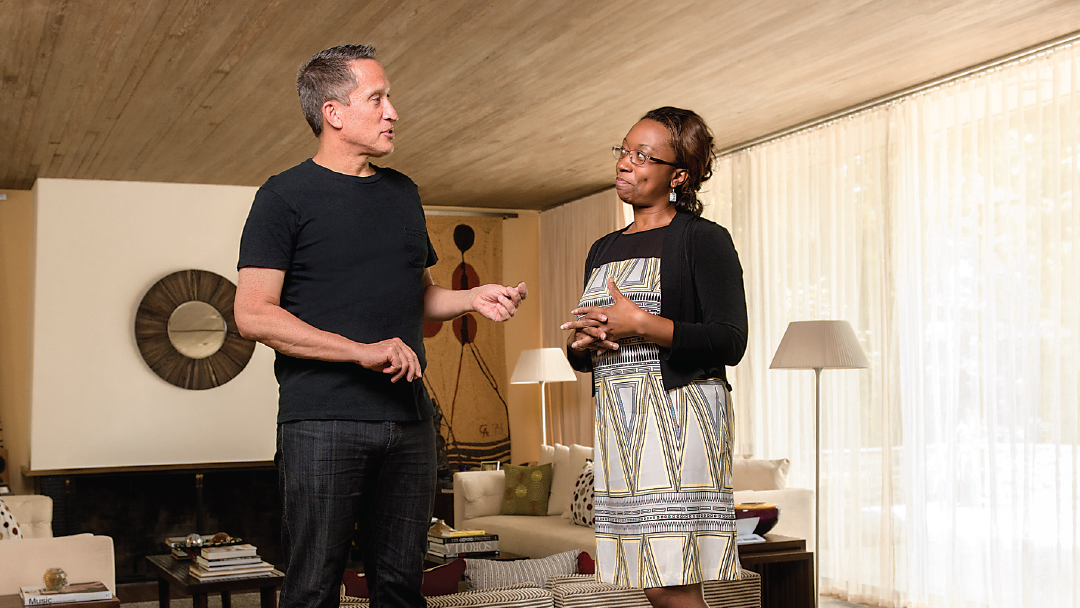
José Antonio Bowen and Shanaysa M. Sauls at Bowen's house in June. —Photography by Mike Morgan
Chemist, author, educator, and accomplished musician: Goucher College’s newest president José Antonio Bowen qualifies as a polymath. The native Californian is also bold, as he proved last year when, just months into his tenure, he introduced a video application option for prospective Goucher students, ruffling more than a few feathers in higher-ed circles. Shanaysha M. Sauls has held just about every position an educator can, from high school teacher to college professor to Baltimore City school board chair, a position from which she resigned this summer in order to run the public charter Baltimore Leadership School for Young Women. Sitting around a long oak dining table in the President’s House at Goucher, the academics quickly found common ground when Bowen dropped a Rousseau reference. “I did my senior thesis on Rousseau. Émile and Julie,” Sauls noted. “Cool,” replied Bowen.
José Antonio Bowen: What tends to happen in college is that we just stuff students full of content. The traditional model is based upon pre-iPhone—‘The only way you’re going to get a lecture on Chaucer is from me.’ Now, people don’t need that. [But] people are still giving those lectures on Chaucer because they say, ‘Well, I have a particular way of looking at it.’ Yeah. Sure. Only you. The real purpose of an undergraduate degree is to come up with a voracious, self-regulated learner, who can learn new things, who, in a sea of cat videos, can still find good information. So the new model is, instead of professors, they’re cognitive coaches. There’s something called a fitness coach who understands your anxiety, your motivation, your body, how you work, what the particulars are. And so teachers, in a sense, are less about providing content, and more about understanding students.
Shanaysha Sauls: But that’s not how professors are trained, right? You and I are both academics. We’re trained: content, content, content. It’s funny because the way you’re describing the relationship between the teacher and the student is how public education is rethinking how we advance educational achievement. This idea that they don’t care about what you say until they know that you care about them.
“Schools are being asked to solve a social problem they didn’t create.”
JAB: I’ve introduced a new three R’s for Goucher that research tells us most determine graduation success but also, as it turns out, life success, happiness. ‘Relationships’ is the first, obviously; ‘Resiliency’ and ‘Reflection’: If you have those three things, you can learn, you can be happy, you can get a job. The relationships really, really matter. They matter a lot more than content.
SMS: So this issue about relationships is important because we turn back to Baltimore and the challenges that a lot of our students face—and the teachers who have to teach our students. A lot of their relationships are not what we would consider healthy. So a lot of times it becomes the school’s responsibility to provide the safe space for you to be the 8-year-old, you know? But the fear is that, sometimes, that translates into being so focused on a culture of safety, that rigor and high expectations get lost in the conversation. You’ve got to have both.
JAB: Schools are being asked to solve a social problem that they didn’t create and they weren’t designed to address.
SMS: But it’s not impossible, because what we see all the time in schools in Baltimore and many other places is, if you describe that student’s life on paper, you would assume one outcome, but it was the school that created a different environment. So it’s possible. It’s hard work, but it’s possible with the right people, with the right commitments.
JAB: [Regarding kids considering college], there’s the crisis of imagination that we face. And a lot of it is that, ‘I don’t know anybody who has graduated from high school. My brother is in prison. I probably won’t graduate. College is expensive.’ Again, relationships—somebody that you really trust has to be able to convince you: If you do well, you can go to college and you can do well. That’s a lot to imagine when you’ve never known anybody who—forget college—has just graduated from high school.
SMS: I would definitely place primacy on the high school diploma because it’s not just an academic credential. It really is a culmination of a set of social experiences that you’ve had.
JAB: It’s an accomplishment. It’s a landmark. It’s a bar mitzvah.
SMS: Yeah! Go to a high school graduation as opposed to a college graduation.
JAB:
Yeah.
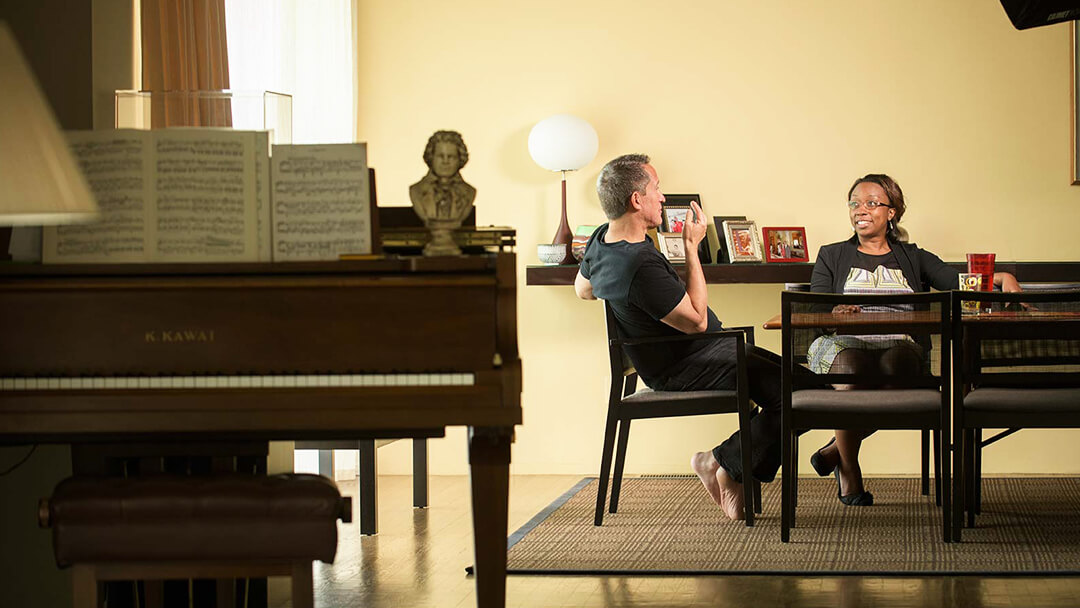
José Antonio Bowen and Shanaysa Sauls discuss the difference between high school and college graduations.—Photography by Mike Morgan
SMS: It’s a night-and-day experience. A high school graduation is magical. It’s electric. Whether you’re going to Goucher, Harvard, CCBC, or not at all. It’s just a different experience, you know? There’s something about high school . . .
JAB: It’s a rite of passage.
SMS: [It says] ‘I’m ready.’ And our responsibility as school districts of the public educational system is to make sure that the high school credential really means something. For a wide variety of reasons, not all of our making, we’ve just not done it.
JAB: What we’ve done [at Goucher] is looked at a lot of the data on who can succeed in college. Many students who have the grades or credentials to go to Harvard, don’t apply to private schools or selective schools. Some don’t go to college at all. They don’t go to college at all. Because they’re poor! They’re going to go work at Wendy’s to support mom. They’ve got perfect SATs or they’re valedictorians, and they go to community college. We were looking at a way to get to those [students]. So this video application was a way to cut through the noise that says, ‘College isn’t for me. College is expensive. College is complicated. I need recommendations and essays and transcripts.’ We say, ‘No. Just make me a two-minute video. Tell me why you want to go to college.’ And it turned out, that really has worked. [Video applicants of color] were double the percentage of students of color in the general applicant pool.
SMS: Whoa!
JAB: And people said, ‘Oh, you’re lowering standards.’ And I said, ‘No we’re not.’ It was a reasonable criticism, but we had different aims.
SMS: As colleges are going to be forced—just based on demographic changes—to attract more students of color and more first-generation students, colleges need to understand that college is not just about academics. There’s a social milieu that’s going to inform their experience, and we have to make sure that the culture and the social environment is also supporting students’ ability to persist.
JAB: That’s exactly right. Nationally, students of color have much lower retention and graduation rates. And who do we blame for that? In K through 12, we can blame the parents and the environment, but as a college, if you have a differential graduation rate for black and white students, that’s your fault.
SMS: What’s not spoken about is that private institutions are actually doing a better job than their public counterparts when it comes to persistence or retention of students of color and first-generation students.
JAB: We spend a lot more money. You know, I have great relations with Towson University down the street, but when you’re dealing with 18,000 [students] as opposed to 1,400 [students], we have a lot more relationships. We know students’ names. [Public schools] don’t have time for that. There, [it’s] just 18,000 students coming at ya. It’s the other message for high school students: Going to an elite private school is your best insurance of success. But to be honest, it’s harder socially.
SMS: Oh, it is. Absolutely.
JAB: There’s just a different social [culture]. It’s smaller, residential. So the private schools are working to figure out, ‘How do we eliminate that gap?’ We’re good at graduating them, but we’re still working on the social isolation part. I was one of those kids [who had a hard time adjusting to college]. College was just so different from high school, and the other kids had read all the stuff and they had fake IDs. It was just like, ‘What is this? What’s going on?!’ It took me a while to catch up, both academically and socially. . . . We have a lot of students that this is their first time being with lots of other white students. I say, ‘It’s going to get worse.’ It’s a hard message. You’re going to be in a workplace, you’re probably going to be a minority there the more successful you are. And I believe it’s one of the reasons that [at] private schools, again, students of color, they don’t just graduate more, they go on to more successful careers. And I’m a perfect example of that. I look around the room and I’m like, ‘Okay [ shrugs], nobody like me, let’s go.’
SMS: Yeah. Yes, it’s fine. You don’t even notice it anymore. You’re like [looks around casually], ‘Oh, yeah.’
Bowen and Sauls began their conversation with some shoptalk that elucidated the somewhat arcane origin and operations of the Baltimore City Board of School Commissioners. Bowen, who has lived all over the world—most recently in Dallas, TX—offered an outsider’s perspective.
José Antonio Bowen: Is the school board in Baltimore City elected?
Shanaysha M. Sauls: Appointed.
JAB: Is it all appointed?
SMS: We’re all jointly appointed by the governor and the mayor. Unusual in the country.
JAB: It is, yes. So there’s no election.
SMS: No.
JAB: How many people on the school board?
SMS: Nine.
JAB: Are there districts?
SMS: No.
JAB: So it’s at-large.
SMS: At-large. And you are appointed based on your professional background. You have to have at least one parent, someone with a background in special education, three people with business experience, three people with education experience.
JAB: So you’re set up by state or city?
SMS: It’s by state law. Almost 20 years ago, 1996, there was a piece of legislation known as the state-city partnership. And because we receive 67 percent of our money from the state, the state wanted more oversight and control over our governance, so that was the origin of the joint appointment. It dislodged the board from under the mayor, and we changed the name of our superintendent to the CEO to make it more prestigious and to make it more about management and executive leadership.
JAB: So [Gregory] Thornton is a CEO?
SMS: He’s a CEO.
JAB: Ohhh. So, in every single way that’s the opposite of the way the Dallas board is set up, which is elected in districts that were set by the federal government back at some point because it was a segregated district. So there are, you know, four Hispanic, four black, and one white [board members]. So nothing gets done. It’s amazing. It really is an incredibly difficult school board. That’s the worst job.
SMS: So, next year, every legislative session, just about, there is legislation introduced to have the school board elected.
JAB: [Laughs]
SMS: So every year we have to try to, you know, cajole, rationalize, beg, convince.
JAB: Nah. This is better. This is way better.
SMS: But, you know, people believe in representation. It’s hard to argue against democratic representation, right? [Laughs] Because we all believe it, but we’re trying to get people to understand that we are volunteers that are committed to the right things. We’re not grandstanding.
JAB: And then [with this system] you can get rid of somebody who is just a political, one-agenda [member]. Because you can get elected because you’re like, ‘I’m going to do school lunch programs,’ or whatever.
SMS: ‘I’m a charter school person.’ Right.
JAB: Wow. That makes it easier. That’s interesting. That changes the politics, but that gives me some hope. That’s good. That’s a better system.
SMS: It’s contentious though. Right now we have to close 26 schools over the next few years and this narrative around representing the community and who do you all represent.
JAB: Because the population is shrinking?
SMS: Well, the population is shrinking. We have a school portfolio of buildings for over 100,000 students and we have 85,000 students. And it’s really expensive to maintain the buildings and, you know, all kinds of shifts. I don’t know if you heard about our $1 billion from the state to rebuild some buildings, but the tradeoff was, you have to close some to build some. It’s all very rational. But people don’t see nuance when you’re confronted with a building that is not going to be [kept].
JAB: That’s one of the things we teach at a liberal arts college. Rousseau was right, that reason doesn’t carry the day. He was anti-Enlightenment.
SMS: Absolutely.
JAB: People vote with their heart. They vote for symbols. They don’t vote rationally at all.
-
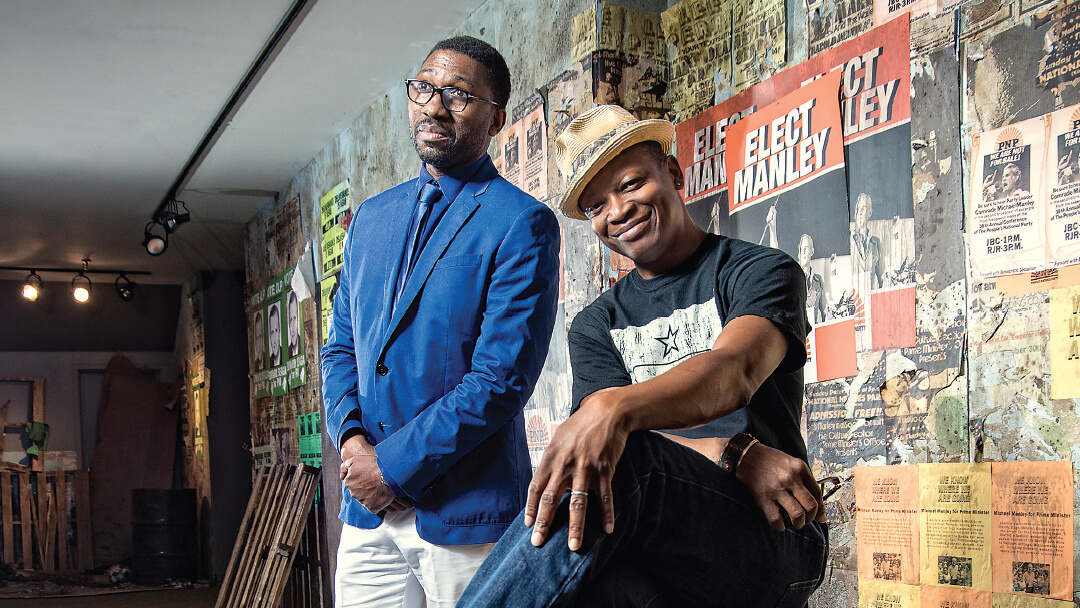
Kwame Kwei-Armah & Lawrence Gilliard Jr.
-

Reverend Donté L. Hickman Sr. & David Warnock
-
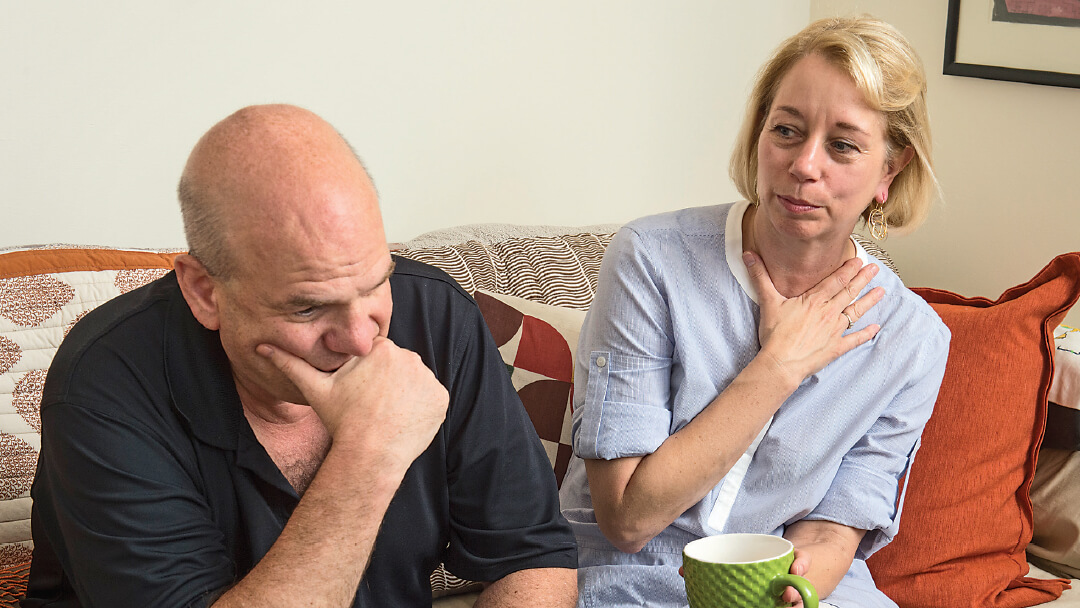
David Simon & Laura Lippman
-
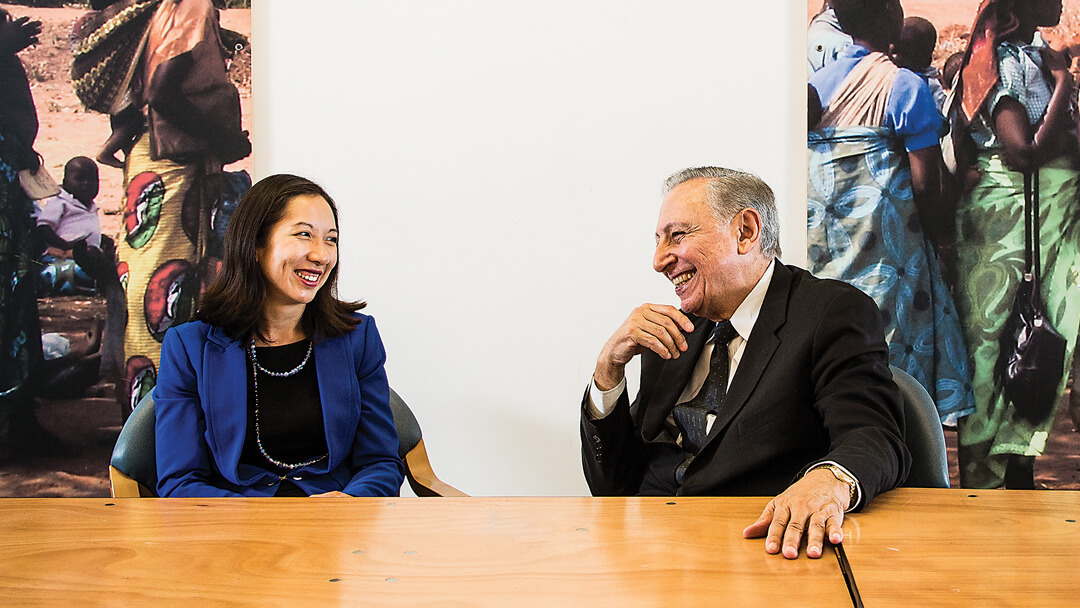
Dr. Leana Wen & Dr. Robert C. Gallo
-
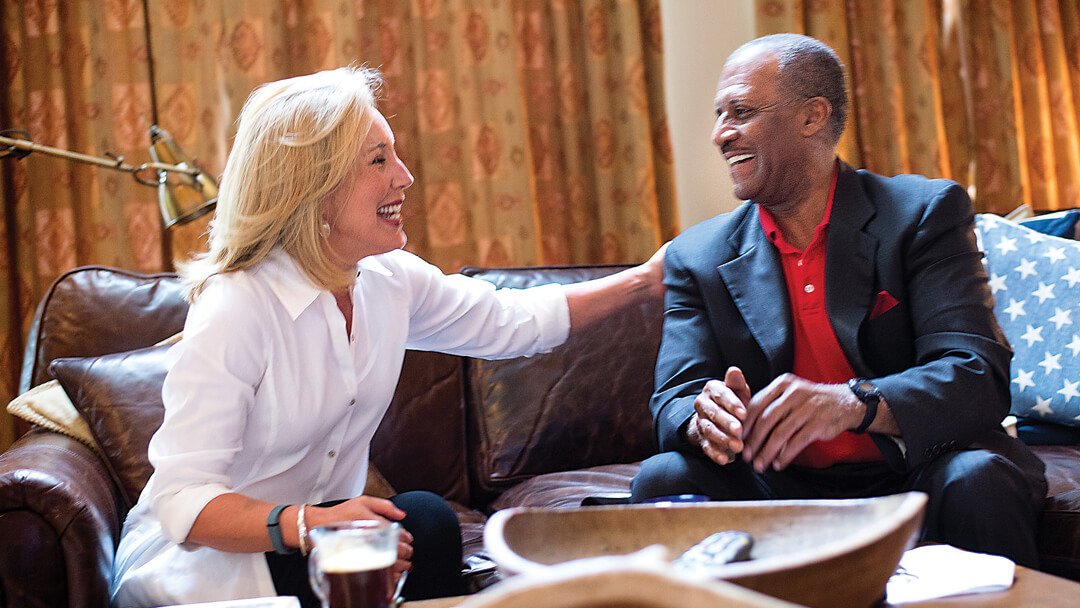
Denise Koch & Stan Stovall
-

Josh Charles & Derek Waters
-
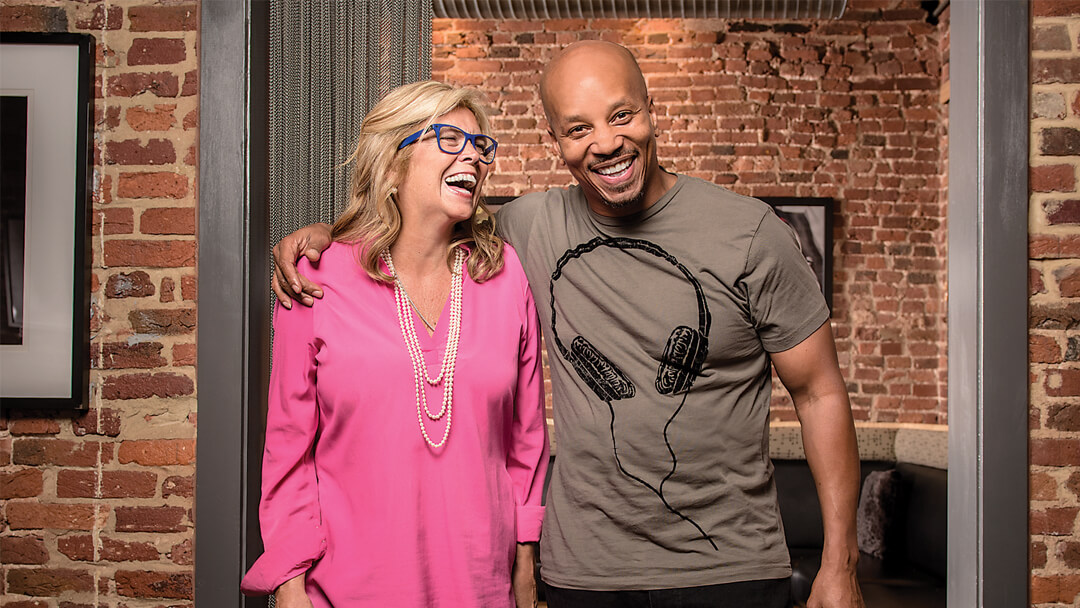
Laurie DeYoung & Konan
-

D. Watkins & Clarence M. Mitchell IV
-
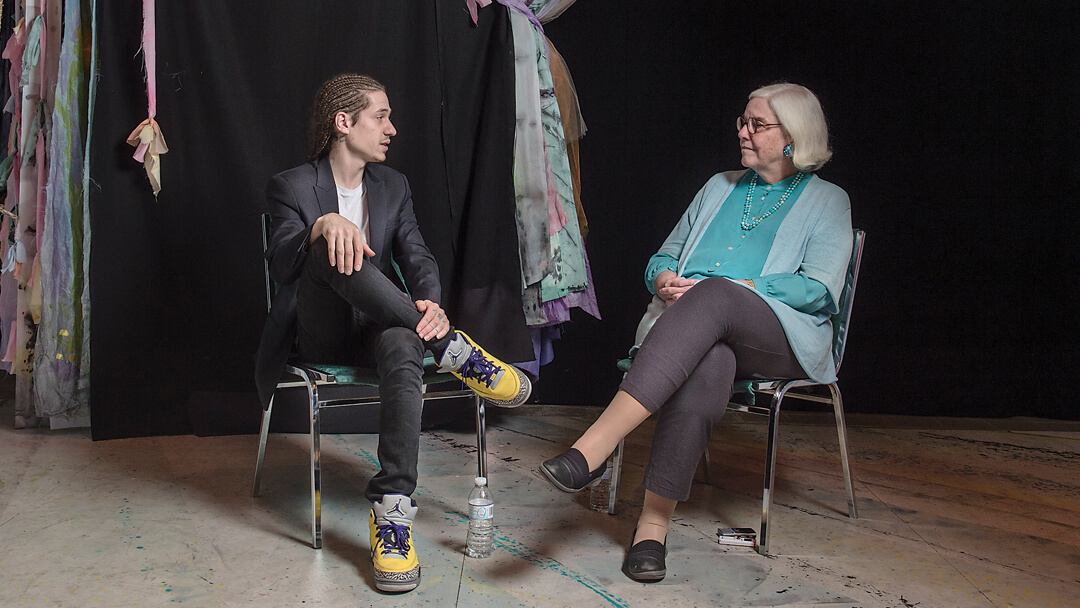
Gaia & Doreen Bolger
-

Deb Tillett & John Davis
-
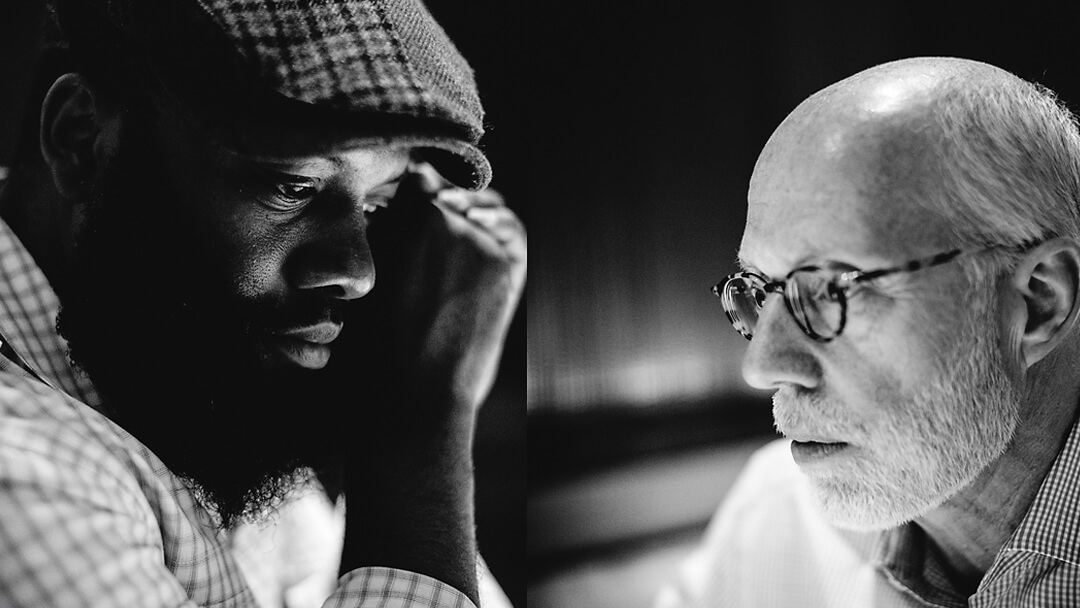
Damian Mosley & Linwood Dame
-

A Conversation with Dan Deacon
-
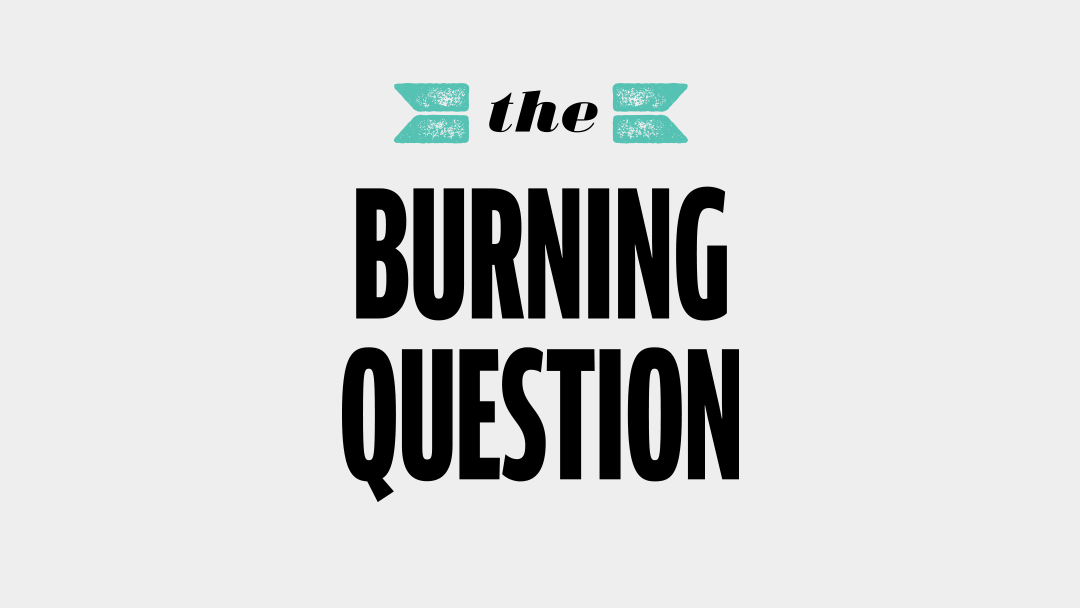
The Burning Question
-

